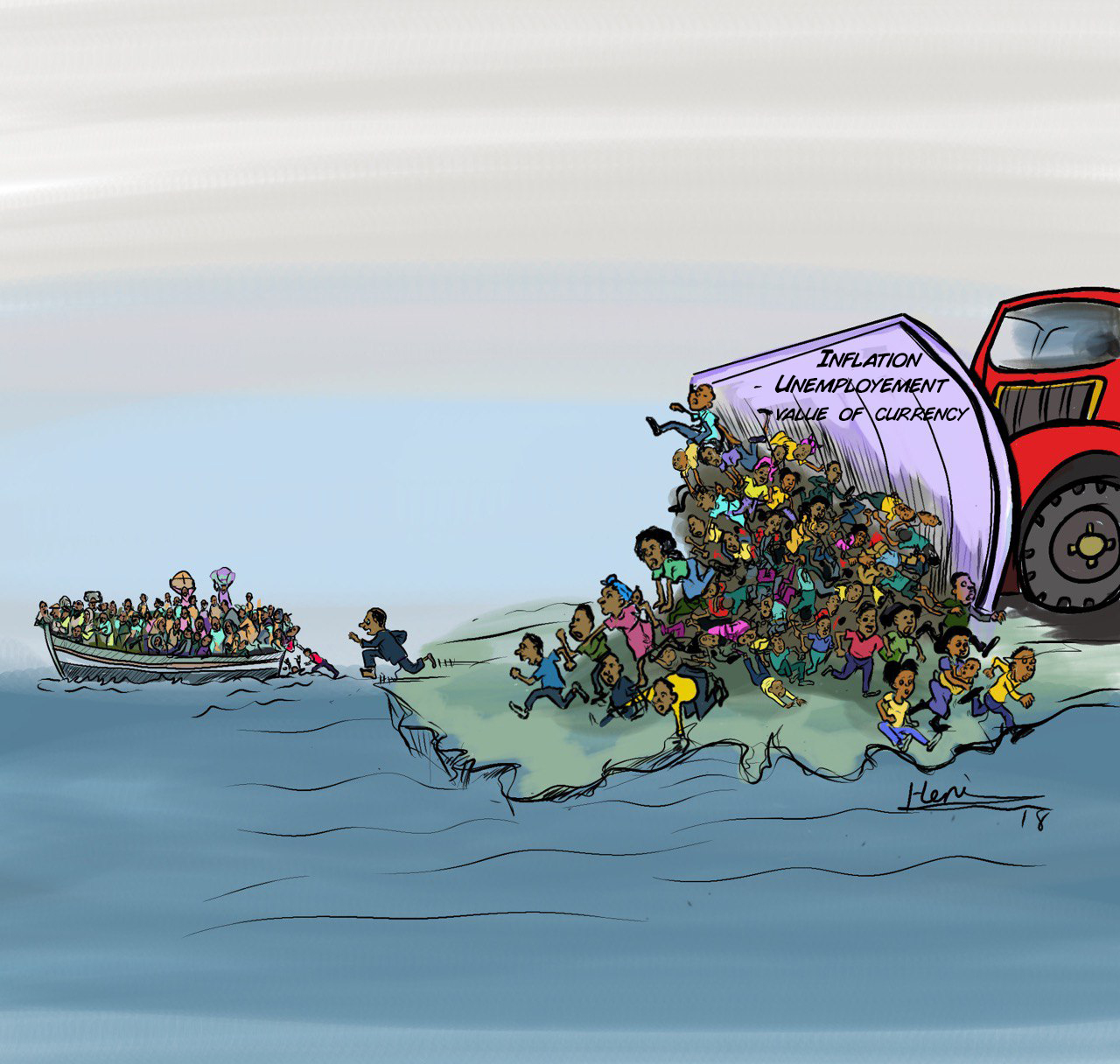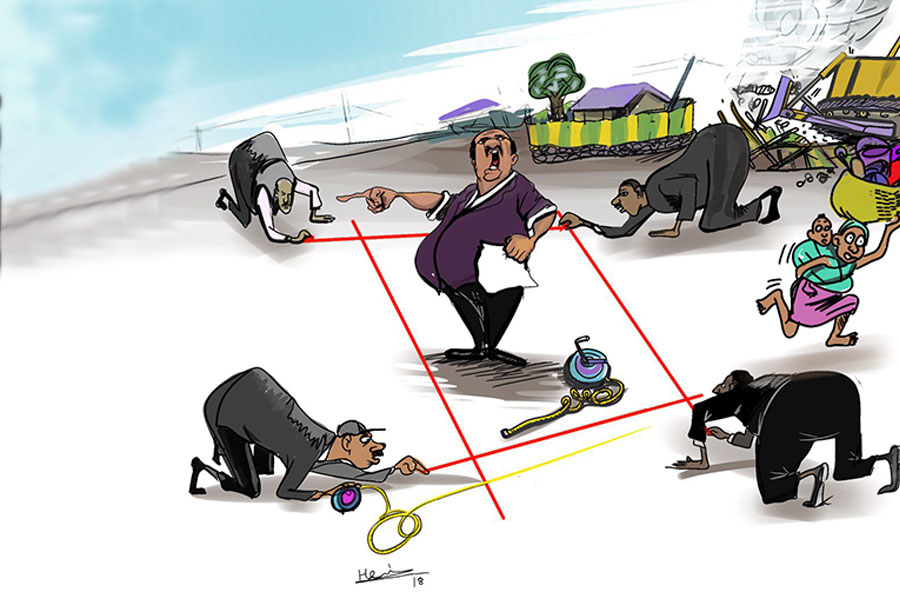
Photo Gallery | 173845 Views | May 06,2019
Sep 28 , 2019. By Dani Rodrik ( Dani Rodrik is a professor of international political economy at Harvard University’s John F. Kennedy School of Government. ) , Arvind Subramanian ( Arvind Subramanian, a senior fellow at the Peterson Institute for International Economics )
There is a danger that developing countries will be tempted to pursue increased foreign borrowing. That path will lead only to more volatility, more frequent crises, and less overall dynamism, write Arvind Subramanian, a senior fellow at the Peterson Institute for International Economics and Dani Rodrik, Professor of International Political Economy at Harvard University. This article first appeared on Project Syndicate.
After holding off for decades, China has finally embraced financial globalisation, announcing recently that it would eliminate capital controls to allow unfettered short-term foreign inflows (so-called hot money). By contrast, after decades of boom-bust cycles, Argentina is facing another macroeconomic crisis, and has finally imposed capital controls to prevent a catastrophic decline in its currency.
Both of these episodes reveal the intellectual hold that financial globalisation still has on policymakers, despite its history of failure. Why, after all, would China abandon capital controls now, and what took Argentina so long to adopt such obviously necessary measures?
The Chinese economic miracle has many sources. In addition to the turn to markets, China has benefited from exports and foreign investment, internal migration, and the Maoist legacy of a public education and health system. It is also the civilizational heir to a strong, effective state with an enlightened, albeit ruthless, leadership. Its people collectively crave stability. But an important factor in China’s rise was the decision not to open the economy to capital flows.
Consider the following counterfactual history. In the late 1990s, when China’s economic miracle was becoming evident, it could easily have succumbed to the prevailing orthodoxy on financial globalisation. Had it done so, the likely outcome would have been a surge in foreign capital chasing high Chinese returns, rapid appreciation of the renminbi, slower export growth, and lost dynamism. China’s export machine would not have become the juggernaut that it is, and its economy may well have suffered through much more volatility as a result of the fickleness of foreign capital. In fact, Argentina – with its periodic macroeconomic volatility and recurring financial crises – offers a perfect illustration of these downsides.
Nearly every major emerging market financial crisis of the past few decades has been preceded or accompanied by surges in capital inflows. That was true of Latin America in the 1980s, India in 1991, Mexico in 1994, and East Asia and Russia in the late 1990s. It was also true of Brazil, Turkey and Argentina in the early 2000s; the Baltics, Iceland, Greece and Spain in the late 2000s and early 2010s; and the “Fragile Five” emerging-market economies (Brazil, India, Indonesia, South Africa and Turkey) in 2013. And it is true of Argentina today.
To be sure, capital flows have often reflected deeper policy problems or imbalances within a given emerging market. But they are also usually the necessary transmission mechanism for crises, and thus have magnified the eventual costs to those economies. Although most tenets of the neoliberal consensus – privatisation, deregulation, trade integration, immigration, fiscal discipline and the primacy of growth over distribution – are now being challenged or outright rejected, financial globalisation remains a glaring exception.
The preponderance of evidence suggests that financial globalisation – especially unrestricted hot money – aggravates macroeconomic instability, creates the conditions for financial crises, and dampens long-run growth by making the tradable sector less competitive. Few economists would list financial globalisation as an essential prerequisite for sustained long-term development or macroeconomic stability. And arguments made in its favour presume that every country has already met highly demanding regulatory requirements. Most have not and probably cannot, except over the long run.
While the International Monetary Fund has begun to make some allowance for restrictions on capital flows, albeit only as a temporary last resort for weathering cyclical surges, the dogma of financial globalisation remains intact. One reason, perhaps, is that development economics has not shed its resource/savings fundamentalism, which attributed underdevelopment to a lack of domestic savings. The implication was that developing and emerging economies should attract resources in the form of foreign aid or, after scepticism about aid became widespread, foreign private capital.
Alternatively, the orthodoxy may owe its resilience to the power of entrenched financial interests that have stood in the way of new controls on cross-border capital flows. Wealthy elites in several countries – especially in Latin America and South Africa – embraced financial globalisation early on, because they saw it as offering a useful escape route for their wealth. In these cases, policy inertia and possible reputational costs made it difficult suddenly to start advocating a reversal. Global financial elites had long relied on a narrative that equates capital controls with expropriation, and responsible policymakers did not want to be seen as violating property rights.
More recently, restrictions on financial flows have become less anathema, because several developing countries have managed to overcome the “original sin” of borrowing in a foreign currency. In the now-accepted hierarchy, financial flows denominated in the local currency rank higher than dollar-denominated flows because they do not result in exploding debt burdens whenever the exchange rate weakens by too much. Forms of borrowing that avoid these balance-sheet effects are understandably regarded as less problematic.
Nonetheless, in the current context of chronic anaemic growth and persistently low – or even negative – long-term interest rates in advanced economies (“Japanification”), there is a danger that developing countries will be tempted to pursue increased foreign borrowing. That path will lead only to more volatility, more frequent crises, and less overall dynamism. But more countries are choosing it nonetheless, and the proponents of the new intellectual revisionism appear to have tamely acquiesced.
PUBLISHED ON
Sep 28,2019 [ VOL
20 , NO
1013]

Photo Gallery | 173845 Views | May 06,2019

Photo Gallery | 164072 Views | Apr 26,2019

Photo Gallery | 154140 Views | Oct 06,2021

My Opinion | 136585 Views | Aug 14,2021

Oct 11 , 2025
Ladislas Farago, a roving Associated Press (AP) correspondent, arrived in Ethiopia in...

Oct 4 , 2025
Eyob Tekalegn (PhD) had been in the Governor's chair for only weeks when, on Septembe...

Sep 27 , 2025
Four years into an experiment with “shock therapy” in education, the national moo...

Sep 20 , 2025
Getachew Reda's return to the national stage was always going to stir attention. Once...